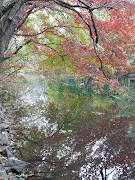Long before the carnage of modern wars, there was a clash of
civilizations in which mangled armies were left to die in appalling conditions,
into which an extraordinary woman waded and challenged military traditions to
provide better aid for wounded soldiers. That’s the background to a recent
piece of art restoration and detective work.
Hearing about the Combat Paper project, a close acquaintance
of Vietnam
veteran Walt Nygard gave him a weathered copper plate etching found during
upgrading an old building. The faintly visible scene focused on a figure in a
long dress bent over someone in a bed, surrounded by gaunt faces of what seemed to be Scottish soldiers in 19th century
British uniforms.
“Florence Nightingale,” Nygard surmised, as several war
veterans inspected the ancient relic during a Combat Paper workshop the other
day at the Printmaking Center of New Jersey studio in Branchburg, NJ.
“Crimean War,” interjected another vet. “Looks like a Scottish kilt,” said a
third, pointing to a faint tartan swatch in the postcard-size etching.
“Let’s see if these smudges can be cleaned off,” said a
fourth vet, as an impromptu work team gathered around, offering advice on
cleaning the tarnished metal and preparing it for transferring an inked image
to a piece of Combat Paper made of
military uniforms from recent wars. The crew of art restorers included
veterans of US wars in Southeast Asia, Somalia and Iraq. Their common bond was
striving to improve upon ways of assisting military veterans cope with war’s
imprint on their lives.
“Wow, look at that!” said one of the vets, as the inked
image virtually leaped from the paper it was printed on: Florence Nightingale
at work in a roomful of severely wounded soldiers. The viewers were pulled into
the long ago war in Crimea, circa 1854.
A quick Internet query filled in much of the history: “… nothing could have prepared Nightingale and
her nurses for what they saw when they arrived at Scutari, the British base
hospital in Constantinople. … More soldiers
were dying from infectious diseases like typhoid and cholera than from injuries
incurred in battle,” according to Biography.com. “The no-nonsense Nightingale
quickly set to work….
“Based on her observations in the Crimea,
Nightingale wrote Notes on Matters Affecting the Health, Efficiency and
Hospital Administration of the British Army, an 830-page report analyzing her
experience and proposing reforms for other military hospitals operating under
poor conditions. The book would spark a total restructuring of the War Office's
administrative department, including the establishment of a Royal Commission
for the Health of the Army.” However, the bio notes, “Nightingale had
contracted ‘Crimean fever’ and would never fully recover. By the time she was
38 years old, she was homebound and bedridden, and would be so for the
remainder of her life. Fiercely determined, and dedicated as ever to improving
health care and alleviating patients’ suffering, Nightingale continued her work
from her bed.”
Decades later, around 1930, American artist Robert Riggs—who’d
served with a Red Cross unit in World War 1—created a stunning lithograph
illustration of Florence Nightingale ministering to wounded soldiers, the very
image on the copper plate that found its way to a Combat Paper workshop.








No comments:
Post a Comment